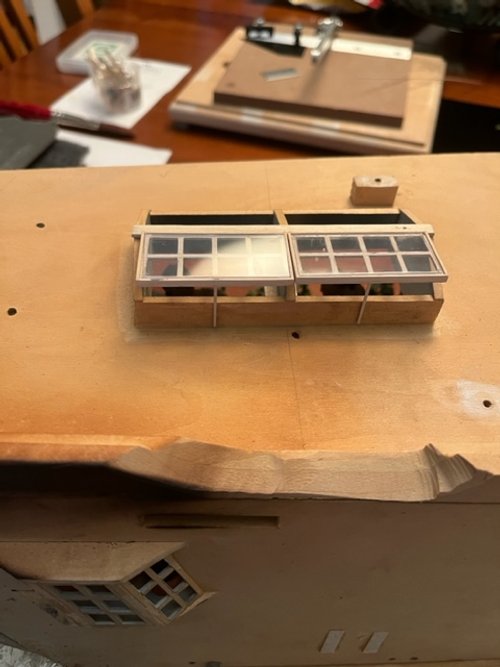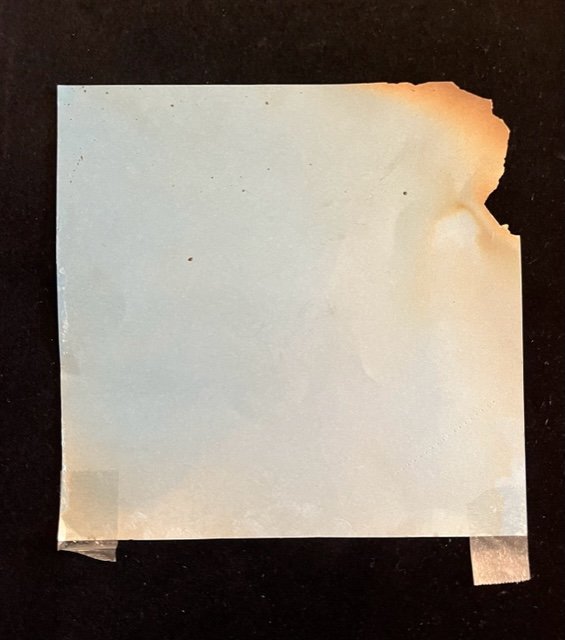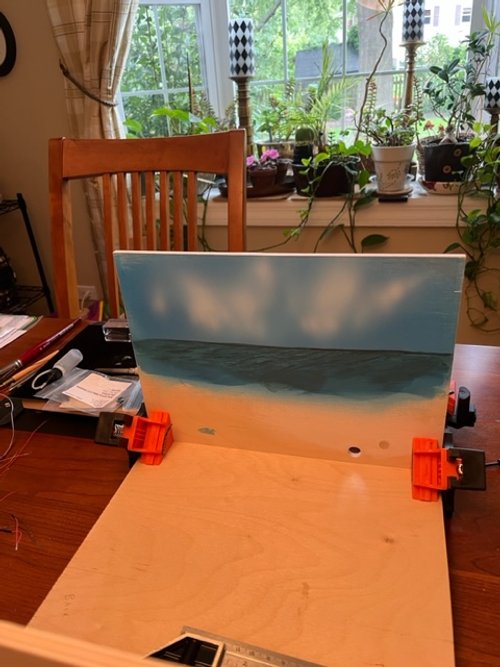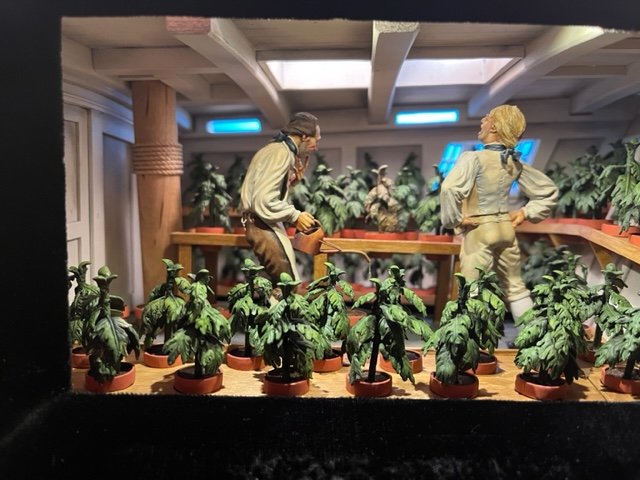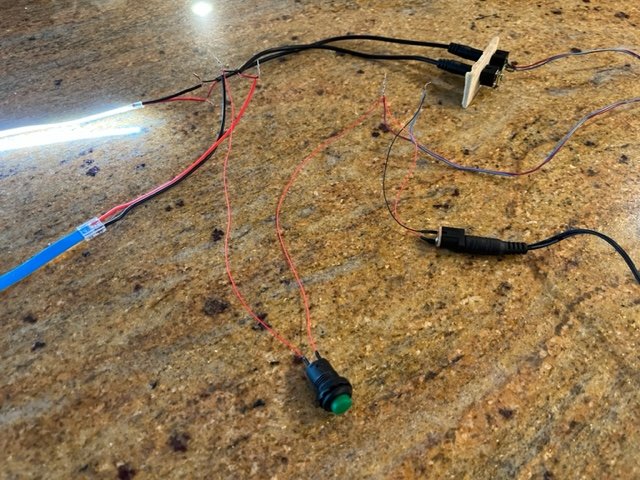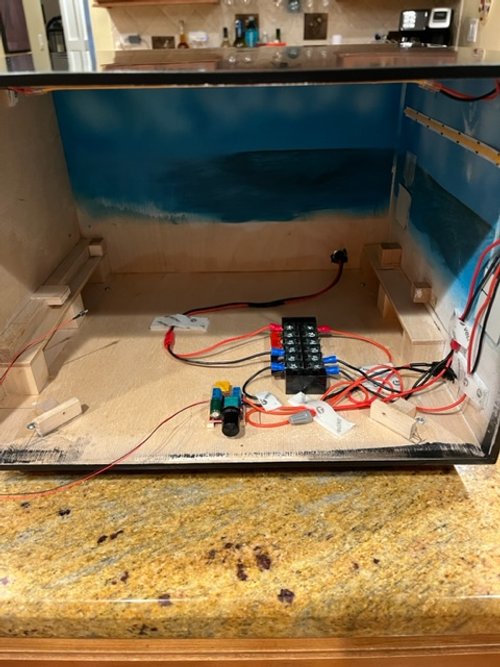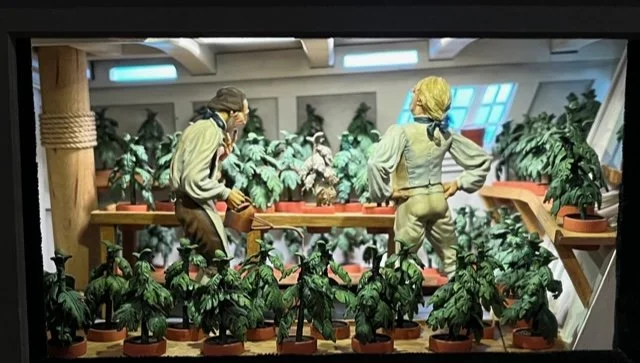Above: Shep’s plan for the diorama.
From Sheperd Paine: The Life and Work of a Master Military Modeler and Historian by Jim DeRogatis (Schiffer Books, 2008)
J.D. Speaking of the cross-pollination of history and literature, what impresses me most about your next box, “Mr. Christian!,” is, once again, how you tell the story so effectively with so few ingredients: the expression on the gardener’s face; Captain Bligh’s aggressive stance; the breadfruit trees... The viewer gets the entire story of Bligh’s tyranny aboard the Bounty in about five seconds.
S.P. This box came about when I came across a diagram of the captain’s cabin—with all of the breadfruit trees and the racks that were built to hold them—in a book about the Bounty. I thought it would make a nice interior scene, but concluded that just having the gardeners puttering around, watering the plants, would be pretty boring. Then I thought of Captain Bligh finding a dead breadfruit tree and blaming Mr. Christian for it.
My favorite figure is the gardener—his body language, and his slightly effeminate and prissy manner. I like the dismay with which he is looking at the dead plant, with his fingers up to his lips, and the watering can dripping precious water on the deck. He’s a classic Norman Rockwell-type figure. I thought about having Captain Bligh looking toward the viewer, but I don’t think it would have added any drama, and there would have been the problem of which Captain Bligh to do. Should it be the historical Captain Bligh, or one of the film actors who played him: Charles Laughton, Trevor Howard, or Anthony Hopkins? By having his back to you, I could duck the issue, and the caption says it all.
J.D. That brings up an interesting point: Was titling your pieces something that you thought about a lot?
S.P. Not necessarily. In this case, the title explains the whole thing, and the box wouldn’t have worked without it, but some of the other scenes were almost self-explanatory. In this one, the title is a quotation, telling you exactly what the character is saying, so it’s essential.
J.D. I love the way this one is lit from above, like the Monitor.
S.P. The skylight was part of the ship, so that provides the light source, and by having it open, Captain Bligh can yell through it to the quarterdeck above.
J.D. How did you model the breadfruit trees?
S.P. I cast the pots and the leaves and assembled them. Then I killed one of them by painting it brown and making the leaves droopy. You had to do everything you could to establish what is happening, because this is the centerpiece of the scene.
J.D. If Comanche was the center of that box, the breadfruit tree is the “star” of this one!
S.P. The story is so simple, there isn’t much more to say about it. That’s how I know it worked.
Shep’s friend and veteran MMSI member Jerry Hutter won this box at the Beloit auction in 2023. Here are his photos and notes on the restoration work.
Restoring Shep Paine’s “Mr. Christian!”
By Jerry Hutter
After picking this up (along with a Peter Twist diorama) at auction, I saw the damage time from an unfortunate fire due to a faulty Radio Shack transformer. Along with singed areas, the skylight had burned in places and was turning to dust. Using Shep’s pattern, I replicated it with basswood strips.
The box itself had a veneer covering that was peeling and bubbling in an unsightly wave pattern. I’m sure heat from the fire and the automotive bulbs he used had something to do with that. As much as I hated to replace it, I felt it needed to be done. My friend and neighbor Ken Kohnke, an excellent cabinet maker, cut all the Baltic birch plywood with precision. After a few mishaps in paint choices, I was able to get a perfect finish with General Finishes Lamp Black milk paint. Used for finishing cabinets, it was a dream to work with and gave a beautiful finish. Highly recommended.
I was able to use the same reveal but needed to put it back in square. I noticed the automotive bulbs are much brighter than LEDs. I could not get the figures themselves lit properly so I mounted a few LEDs on a dimmer for fill light. That did the trick.
The blue construction paper backdrop seen through the windows was either burnt or missing, so I painted the seascape and sky over a coat of gesso directly on the inside of the box where it is seen.
Many of the breadfruit trees had a bit of lead rot as those were cast from metal. After matching the colors, I repainted them after a barrier coat of varnish. I also had to figure out where a number of loose leaves that I found on the floor were located. There were so many plants it took a while to figure that out. I used blue tack at the end of a skewer to glue them back into their holes. A little touch up paint on Bligh’s left sleeve where there was a brown discoloration and the paintwork was done.
The lighting is something that gave me problems. Shep used three bayonet bulbs that produced the daylight coming through the skylight and windows. Those fittings were corroded and since the plan was to duplicate his lighting effect with LED’s, they were removed. By far the thing that took the most time was replicating the bright sunlight effect Shep intended. After much trial and error with different bulbs, I settled on both cool and warm LED strips and mounted them on the top and stern of the ship. Jim DeRogatis and Barry Biediger gave me valuable advice in all the miniature lighting, from sources to how to wire the scene. A big thank-you, guys!
I installed a new frame and matt that matched the linen one Shep used and the scene was finished. I was happy it was included in the MMSI’s Chicago show.
What a learning experience this was to bring “Mr. Christian!” back to all its former glory. I now have enough confidence to create my own ideas for future projects.



